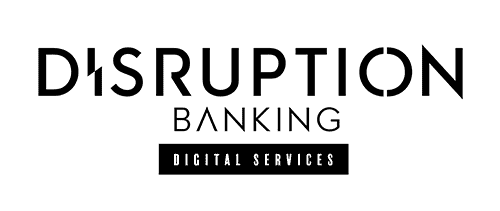Over the last five years the use of cryptocurrencies, digital assets, and alternative financial vehicles has become more widespread. That kind of activity has brought on what we now term decentralised finance, or DeFi. The adoption of the technology has had both spectacular successes and explosive failures. In a panel discussion at this year’s Money20/20, Rita Martins, Head of FinTech Partnerships at HSBC, Shyamal Patel, Head of Product at Sommelier Finance, Szymon Sypniewich, CEO at Ramp, and Tycho Onnach, Co-Founder at Zest Protocol, talked about broadening DeFi adoption, and what lessons, if any, are applicable to the space from traditional financial services and regulated fintech.
Kicking off the discussion, Martins stressed that it’s really crucial that banks first understand new technologies and innovations in financial services before adoption and how they can leverage existing processes. For instance, some of the use cases of blockchain technology, like cross-border payments, are already well-known across the industry, but banks should evaluate cases comprehensively to get a thorough understanding of threats and opportunities. Drawing on the fact that there is currently $100 billion locked in DeFi products, she noted that “it’s clearly not a fad. It’s something that’s really coming… So it’s really important for us to understand and start, from early on, to really understand the technology and some of the different use cases.”
Sypniewich mentioned that regulations, similarly, need to understand this new space better before they can enact appropriate rules. “I think that actually we do already have all the tools that we need to effectively police this new space, and make sure that end-users and consumers are sufficiently protected. I just think that we just need a little bit more enforcement action. So we just need crypto to be something that regulators understand, and where they look at it they are competent and capable enough to come in and try to intervene.”
The Commodity Futures Trading Commission on Thursday sued the crypto company owned by the billionaire Winklevoss brothers, saying it misled regulators as part of an effort to gain approval for bitcoin futures in 2017 https://t.co/GwXlKnApeo
— The Wall Street Journal (@WSJ) June 3, 2022
Early adapters of DeFi face two main challenges. First, enough money needs to be put in the system so that it is tested in a real world environment. As Onnach noted, DeFi adapters are essentially currently beta testing the future of the financial system. On the other hand, products need to be launched at a relatively low cost.
When it comes to innovation, there are inevitably some losses that should be factored in, but the question emerges: how much money is too much for experimenting? The panellists could not bypass the recent events at Terra Luna, where hundreds of thousands of people lost money. “Well, I would say 50 billion is quite a hefty price tag for some innovation around stable coins,” Onnach shared his opinion. “I guess there was probably a lot of money going in there without the users actually knowing what was going on.”
“These people were users who were not even informed that the underlying protocol that they’re using is Terra,” Sypniewich added. “They just felt that they’re allocating some of their cash to something that looks like a bank.”
Some crypto investors say TerraUSD and Luna's $60 billion crash pushed them to the brink and led to thoughts of self-harm https://t.co/uj1BLgAKFB
— Tech Insider (@TechInsider) June 10, 2022
Part of the solution, they agreed, is that improvement in terms and disclosures is needed, and customers, too, should be educated. Patel mentioned that disclosures in traditional finance do protect customers relatively well, so these might be useful in DeFi too. A standard regulatory framework is needed, he said. “It’s our responsibility to kind of educate the users on some of these risks without being punished for being liable for all of the all of the things in general. There is a balance that we need to strike.”
Whoever controls the top layer of the entire stack of the products should be disclosed, Sypniewich commented. More precisely, he argued that risk should be signaled by the price and yield as in traditional capital markets. “The best disclosure you can make is to price in the risk. And we sort of already have great tools for that; we have insurance protocols. We’ve got Nexus and similar products already. And we should, you know, employ market forces to try to price the risk and then even showing how much it would cost to ensure any given transaction would give an end-user sort an idea of the scale of risk involved. And I feel like you cannot be more direct and clear on the scale of the risk of damage just to name a price for it.”
The panellists unanimously agreed that the key is finding balance between regulation and innovation. If there is too little regulation, people assume too much unknown risk and episodes such as Terra Luna will keep happening. On the other hand, too much regulation can undermine innovation.
“What’s really important as well is that to make sure that there is conversations between regulators, between banks and between some of the DeFi companies within the market, to be able to understand from not just a technology perspective, but also from a financial services perspective,” Martins said.
Tech experts urge Washington to resist crypto industry’s influence https://t.co/Hj6yMPrZ1A
— Financial Times (@FT) June 1, 2022
She shared how she perceives the different phases of regulating a new technology. First, it is easy to regulate those technologies where the existing processes are simply digitised. Afterwards, regulators should start thinking about the long-term implications of new technologies and new business models that these technologies might entail. This might mean that we should completely rethink KYC and AML processes, for example.
However, as long as regulators do not have a fundamental and through understanding of decentralised markets, enacting proper regulations will remain a challenge. “If the regulators would give us a blacklist, we would be very happy to adhere to those regulations in general,” Patel said. “But currently they’re still exploring what is happening on the blockchain, they don’t even know about a lot of the basics – of how to regulate this industry in general.”
The solution, Sypniewich concluded, is self-regulation. “We should look at payment networks like Visa and MasterCard, which are in itself, self-regulated to an extent that makes a lot of regulators comfortable enough. They’re very loosely regulated in many jurisdictions, and this lets Visa and Mastercard push innovations forward. That’s led to them winning the trust of regulators and having the space and sandbox to innovate, and, at the same time, not be in a constant struggle to loosen up regulation in areas where maybe it’s not necessarily needed.”
“And so self-regulation is the answer and we shouldn’t wait to see what will happen. We should take active steps and this is in our best interests as the crypto industry.”
Critics can, of course, object that self-regulation has not proved to be an effective solution to control decentralised markets so far. However, enforcing appropriate regulation is itself – just like decentralised markets –an evolutionary rather than a revolutionary process.
Author: Benjamin Jenei
#Money2020EU #HSBC #DeFi #Crypto #Regulation















